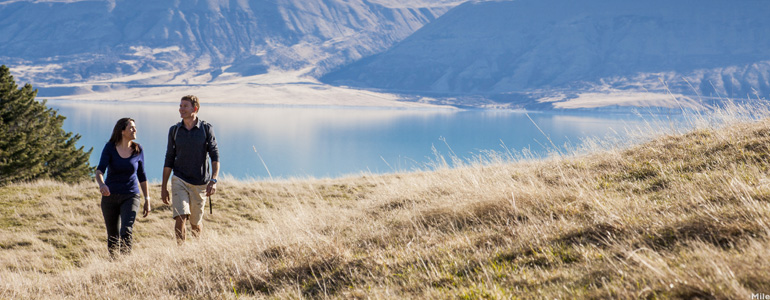Brand positioning
Successful destinations have a clear brand and positioning that captures the essence of the destination. Collections of people, places and experiences create the destination’s brand story and value proposition. The destination’s logo is a symbol that represents the destination and the experience offered.
On this page
Building a brand involves extensive research and consultation to identify the destination’s strengths, weaknesses and opportunities, as well as the way visitors, the industry, Māori and the community see it. Listen, learn and engage before making decisions. Make sure local residents and businesses are engaged in the branding process.
After developing the brand story, share the ‘brand assets’ with stakeholders to make it easier for them to use and support the destination’s brand.
Encourage your tourism operators to bring the destination’s brand story to life through the delivery of their experiences and communications.
Domestic and international visitors can have different perceptions of your destination’s brand offering and therefore you may need to be flexible when promoting to different markets at different times.
Remember: the people and the community own the brand, which is a reflection of them and their place; the Destination Management Organisation owns the brand strategy and is responsible for upholding its story, values/integrity, creative execution and application. Branding a destination is a long-term endeavour; it takes time to do it well.
Ask
- Does the brand capture the essence, character/personality and ‘tone of voice’ of the destination?
- Does it provide a clear point of difference or competitive advantage and support the destination’s offering?
- Does it provide a strong platform for ‘place making’ and ‘storytelling’?
- Do the industry, key stakeholders and community all support the brand?
- Does the brand incorporate the essence of the cultural experience? Are Māori/iwi/hapū involved in the branding process and its stewardship?
- Does the brand strategy clearly outline how to use the brand? Does it link with other sectors of the destination’s economy?
- Do the marketing and communications accurately reflect the destination brand?
- Who is responsible for our regional brand strategy marketing and stewardship?
- Do we have a range of ‘consumer led propositions’ which allow the brand to be flexibly applied when promoting to international or domestic visitors and at different times of the year?

Miles Holden, Hooker Valley, Mount Cook National Park, Canterbury
“Place DNA™ has helped us to become clear about who we are as a destination. This has been gold for us. We’re just starting to implement The Love of Tourism, but we have a really clear picture of our DNA. Our people (community) have given this picture to us, so it has huge authenticity and truth to it.”
Kristin Dunne, CEO, Tourism Bay of Plenty

